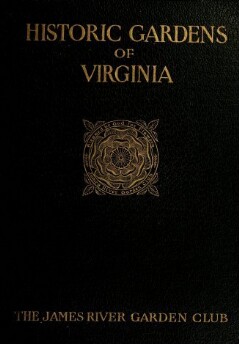Oldal 264 [264]
POPLAR GROVE
wy aj] by water) which is now Mathews County. It was
cl! here that Samuel Williams, of Northumberland
County, received from George III a large grant of
land which passed to his son, Thomas, who built
the west wing of Poplar Grove in 1782. Ten years later it was
sold to John Patterson, and he, it is said, having obtained the same
architect who designed Mount Vernon, added greatly to the house.
About this time, the feeling between the two parties—Whig
and Tory—was very keen and Mr. Patterson, in honor of his
political affiliations, called his home Poplar Grove and planted on
its lawn numbers of beautiful Lombardy poplars, the symbol of
the Whigs.
With the lawn sloping down a few hundred feet to the
water, a magnificent view is commanded of Mobjack Bay. Io
the south, just fourteen miles away, is Yorktown, and it was from
there that schooners, laden with corn to grind for George Wash¬
ington’s army, sailed around York Spit and across the bay to the
old mill at Poplar Grove. The old mill is still standing and is a
continual inspiration to artists.
To the west of the house, and extending almost to the water's
edge, was the old garden and, across the north end, ran a serpentine
brick wall. Through the influence of Thomas Jefferson, this type
of wall had become the vogue in Virginia about that date. Separat¬
ing the garden from the lawn, ran a low brick wall capped with
old English crescent-shaped brick. A part of the serpentine wall
and all of the little wall still stand. |
Like so many of the old gardens, the flowers and vegetables
were in the same enclosure. Along the central walk were three
[161 |

